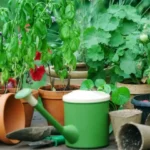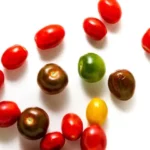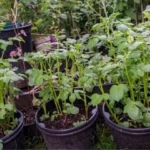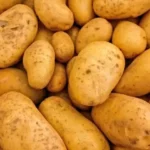If you’re curious about how to grow potatoes in a container indoors, there are several key factors to consider for successful cultivation. From selecting a suitable variety to providing proper care and maintenance, the process can be rewarding and satisfying.
Growing potatoes in a container indoors can be a fulfilling experience, offering a fresh and homegrown source of this versatile vegetable. Here’s a guide on how to cultivate potatoes in an indoor container:
- Selecting a Container: Choose a sizable container with drainage holes at the bottom. A 5-gallon (19-liter) container is suitable for potato cultivation. Ensure the container is clean, food-grade, and hasn’t been used for growing plants that might carry pests or diseases.
- Preparing the Container: Fill the container’s bottom with 3-4 inches of well-draining potting mix. Avoid using garden soil as it lacks suitable nutrients and can become compacted in containers.
- Prepping Seed Potatoes: Chit or sprout the seed potatoes in a cool, well-lit spot for several weeks before planting. Cut larger seed potatoes into pieces, each with at least one or two eyes (sprouts). Let the cut pieces dry for a day or two before planting.
- Planting Potatoes: Position the seed potatoes on top of the potting mix, spacing them evenly. Cover the seed potatoes with a few inches of potting mix, leaving space at the container’s top for hilling later.
- Watering and Maintenance: Keep the potting mix consistently moist but not saturated. Place the container in a sunny location with 6-8 hours of sunlight daily. Rotate the container regularly for uniform growth.
- Hilling Potatoes: As the potato plants grow, add more potting mix around their base to cover the stems. This practice promotes the growth of more tubers.
- Harvesting: Potatoes are ready for harvest when the plants flower and the foliage starts to yellow and wither. Gently dig around the plant base to harvest the potatoes.
- Storage: Store harvested potatoes in a cool, dark, and well-ventilated area to prevent sprouting and spoilage.

In this article, you’ll find several crucial steps to get your spud-growing endeavors up and running. From selecting the best potato variety for you and your region to overcoming common challenges, you’ll have a foundational knowledge of what it takes to grow potatoes successfully in indoor containers, which can help you set yourself up for a flourishing indoor potato garden.
Humble Highlights
- Save time with these 3 vital steps for growing potatoes in containers AND how growing spuds indoors helps protect against common potato pests so you can cultivate delicious low-maintenance tubers, that are ideal for indoor gardening – especially for beginners or those with busy schedules.
- Discover the best time to harvest your indoor container-growth potatoes AND how to carefully harvest your delicious tubers effortlessly so you can ensure your spuds are fresh and full of flavor, enhancing the taste of your meals while being a cost-effective way to produce your own food.
- Overcome common potato challenges with these 3 practical tips to help keep your plants happy, healthy, and productive so you can provide a stable indoor environment and temperatures from harsh outdoor weather.
Selecting Suitable Potato Variety
When selecting a potato variety for indoor container gardening, opt for petite or fingerling varieties that thrive in confined spaces and specific lighting conditions. Petite and fingerling potatoes are ideal choices for indoor containers due to their compact size and ability to adapt well to indoor conditions.

Purple, blue, and white varieties, in particular, tend to flourish in indoor settings, adding both visual appeal and flavor diversity to your indoor garden. These varieties are known for their adaptability to limited space and are well-suited for container growth. 1
Choosing the right potato variety for indoor containers involves considering space availability and lighting conditions. Purple, blue, and white potatoes thrive in indoor environments and offer a unique color palette to your indoor garden.
By selecting these varieties, you can ensure that your indoor potato plants receive the necessary light and space to promote healthy growth and a bountiful harvest.
Preparing Potato Seeds For Planting
Proper preparation of the potato seeds is essential for successful growth in your indoor potato container. Follow these steps to prepare your seed potatoes for planting:
- Scrub Thoroughly: Before planting, scrub the seed potatoes thoroughly to remove any dirt or debris. This process helps prevent any potential diseases from affecting your potato plants.
- Cut Carefully: Cut the seed potatoes into smaller chunks, ensuring each piece has at least two eyes. The sprouts will emerge in these eyes, so having multiple eyes on each chunk increases the chances of successful sprouting.
- Air Dry for Protection: Allow the seed potatoes to air dry for a day or two after cutting. This process helps the cut surfaces to form a protective layer, reducing the risk of rotting when planted.
It’s important to choose the right size of seed potato. Sounds easy, right? Well, not quite. While larger seed potatoes may seem more desirable for planting, smaller ones can be just as effective. In fact, small seed potatoes can produce healthy plants and a good yield, especially if they have a sufficient number of eyes or sprouts. 2
Additionally, small seed potatoes are often less expensive and easier to handle and plant, making them a practical choice for gardeners.
Choosing The Right Container
Select a container with a depth of at least 2-3 feet and drainage holes to ensure the best growth of your indoor potato plants. Potatoes need proper drainage to flourish, so it’s crucial to opt for containers like fabric grow bags or plastic buckets with adequate drainage.
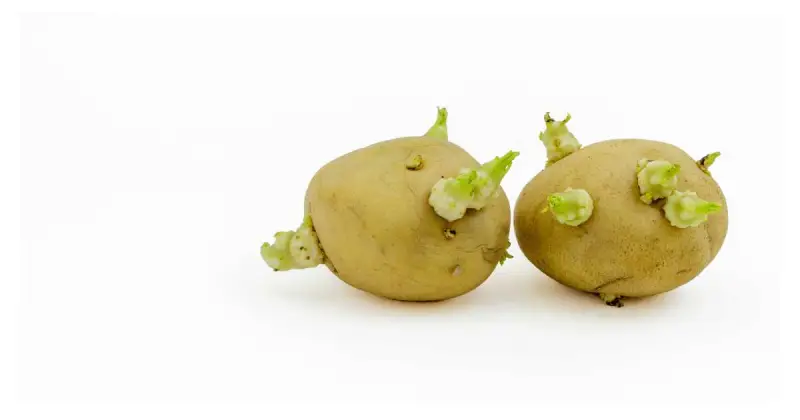
Containers with adequate drainage or fabric grow bags prevent waterlogging and protect your potatoes from pests like wireworms. Avoid using old tires, as they may not offer the necessary drainage for successful growth. 3
When selecting containers for indoor potato cultivation, consider the size and material carefully. Containers are particularly beneficial for those with limited outdoor space or dealing with rocky soil, providing a controlled environment for optimal potato development.
Planting Potatoes In Containers
For peak growth of your indoor potato plants, plant them in containers at least two weeks before your region’s last average frost date. When growing potatoes in containers indoors, follow these specific guidelines to maximize yield and quality:
- Timing Is Key: Plant your potatoes in containers a couple of weeks before the last frost date to give them ample time to establish themselves before the growing season begins.
- Protection Against Late Frosts: During late frosts, move your containers to protected spots to shield your potato plants from potential damage, ensuring they continue to thrive. 4
- Container Gardening Benefits: Growing potatoes in indoor containers protects against pests like wireworms and is also ideal for those with limited garden spaces or challenging soil conditions, such as rocky terrains. This method offers a controlled environment that can enhance the growth of your potatoes, leading to a bountiful harvest of high-quality tubers.
Choosing the correct container with the appropriate depth and proper drainage sets the stage for a successful indoor potato-growing experience. It doesn’t take up a lot of room and is easier than you may think. By following the steps in the video below, you can effectively grow potatoes in an indoor container, adding a fresh, homegrown addition to your indoor gardening endeavors.
Caring For Indoor Potato Plants
When tending to indoor potato plants, ensure regular watering to maintain moist soil without waterlogging and support ideal growth. Potatoes require consistent moisture levels, so check the soil regularly and water when the top inch feels dry.
In addition to watering, indoor potato plants need at least 5-6 hours of bright, filtered light daily to thrive and carry out photosynthesis effectively. If natural light is insufficient, consider supplementing grow lights or LED lights, which are inexpensive and more accessible to set up than you may realize.
Fertilize your indoor potato plants every two weeks with a well-balanced fertilizer to provide essential nutrients for healthy development, and monitor your plants for pests and diseases regularly, as early detection can help prevent significant damage. 5
Taking these steps will help ensure your indoor potato plants thrive and produce a bountiful harvest in your containers.
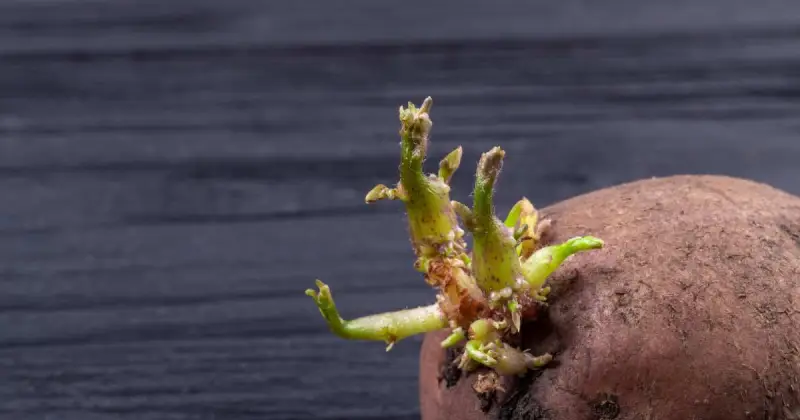
Harvesting Container-Grown Potatoes
When harvesting container-grown potatoes, wait until the foliage turns yellow, starts to wither, and dies back. Use a garden fork to carefully unearth the potatoes from the container, being gentle to avoid damaging the tubers or overturning your container. After harvesting, let the potatoes air dry in sunlight for a few hours before storing them in a cool, dark, and well-ventilated location to maintain their freshness.
Timing For Harvest
Observe the foliage as it turns yellow and withers to determine the best timing for harvesting your container-grown potatoes. Here are some key points to help you assess the right time for harvesting:
- Check Foliage: When the plant’s foliage turns yellow and begins to die back, the potatoes are mature.
- Assess Tubers: Gently dig around the plant to assess tuber size and development, ensuring they’ve reached a desirable harvest size.
- Minimum Growth Period: Aim for a minimum growth period of 2-3 months from planting to harvesting container-grown potatoes. However, new potatoes can be harvested sooner, typically around two months. 6
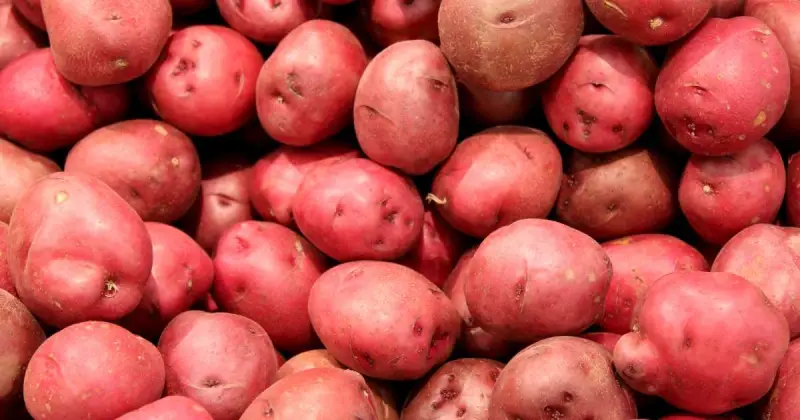
Harvesting Techniques
Using a garden fork, carefully excavate the container-grown potatoes for minimal damage during harvesting. As explained above, the best time to harvest is when the plants show yellowing foliage and begin to die back.
After harvesting, allow the potatoes to cure in a cool, dry place for a few days to toughen their skins before storage. Store the harvested potatoes in a dark, well-ventilated area to avoid spoilage, regularly checking for signs of rot or sprouting.
Properly harvested and stored container-grown potatoes can offer fresh produce for an extended period, supporting a sustainable indoor gardening experience. Follow these steps diligently to enjoy your home-grown potatoes.
Common Potato Growing Challenges
When growing potatoes in containers indoors, you may encounter challenges such as:
- Managing pests effectively
- Maintaining ideal soil moisture levels
- Ensuring proper temperature and lighting conditions
Pest control methods are essential to prevent infestations that can harm your potato plants. Closely monitoring soil moisture, temperature, and lighting helps address these common challenges and promote healthy growth.
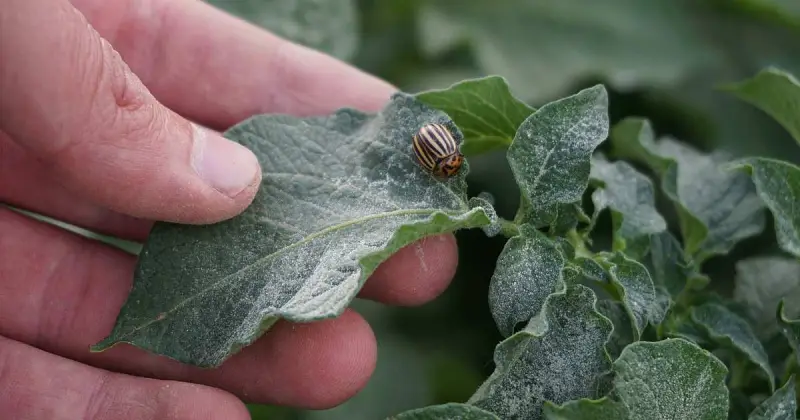
Pest Control Methods
Implementing effective pest control measures is essential for overcoming common challenges encountered when growing potatoes in containers indoors. To combat pests effectively, consider the following strategies:
- Use Neem oil spray or insecticidal soap to control common pests like potato beetles and aphids. 7
- Introduce beneficial insects like ladybugs or lacewings to control pest populations in your indoor potato container naturally.
- Rotate planting locations annually to reduce pest pressure and prevent infestations in consecutive growing seasons.
These methods can help you maintain a healthy environment for your potato plants, providing them the potential for maximum growth. Remember, proactive pest control is vital to a thriving potato crop in indoor containers.
Soil Moisture Levels
Maintaining ideal soil moisture levels remains crucial for successful potato growth in indoor containers. To avoid waterlogging issues, use well-draining soil for container-grown potatoes.
Monitoring moisture levels is crucial in adjusting watering frequency appropriately. The goal is to keep the soil moist while avoiding saturated conditions to support healthy root development and tuber formation.
While overwatering may lead to excessive rot and unnecessary fungal challenges in your crop, underwatering can stunt growth and lessen yields. This results in poorly formed or smaller tubers. It can also make plants more vulnerable to diseases such as late blight and early blight, which can devastate potato crops.
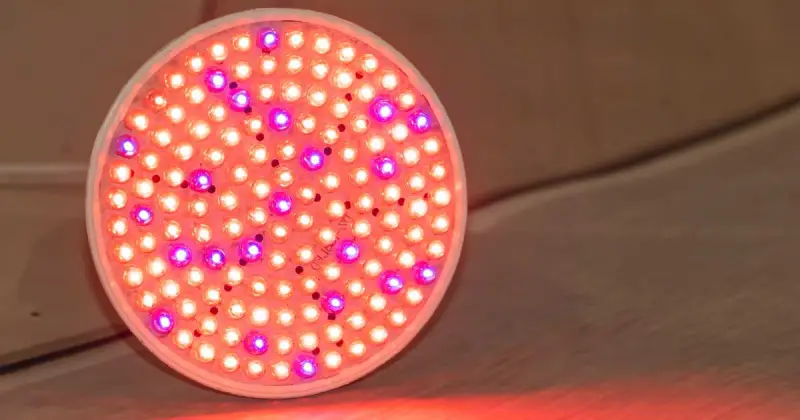
Temperature And Lighting
For ideal growing conditions for your indoor potato plants, maintaining temperatures between 60-70°F and providing 5-6 hours of direct sunlight daily or using LED grow lights are vital factors backyard growers should take into account. Here are some additional points to take into consideration:
- Temperature Control: Keep temperatures steady between 60-70°F (15-21°C) to promote healthy growth.
- Lighting Requirements: Ensure your potatoes receive 5-6 hours of direct sunlight daily or utilize LED grow lights with a color temperature of 5000-6500K.
- Consistency is Key: Monitor temperature fluctuations closely and adjust lighting to maintain consistent conditions for optimal and healthy potato development.
Remember that excessively warm soil can hinder tuber development when cultivating your spuds indoors. While potatoes thrive in cooler soil temperatures for germination and early growth, prolonged exposure to high temperatures above 80°F (27°C) can cause the plants to focus more on top growth than tuber development.
If temperatures remain warm, the result can be a disappointing yield with smaller potatoes or fewer tubers. To promote healthy tuber development, maintain soil temperatures within the optimal range and provide adequate moisture to keep the plants cool and hydrated.
Conclusion
Cultivating potatoes in indoor containers necessitates carefully selecting suitable varieties, properly preparing seeds, choosing the right container, attentive care, and timely harvesting.
You’ll also want to remember to monitor for pests, maintain ideal growing conditions, and provide adequate light for successful indoor potato cultivation. By following these steps diligently, you can enjoy a bountiful harvest of fresh, homegrown potatoes right from your home.
Are you a home gardener who successfully cultivates homegrown spuds indoors in containers? Drop us a line below and let us know if your process follows any of the steps in this article or is entirely different, AND tell us the size container that works best for you!
SOURCES
- Wikipedia – Potato
- National Library Of Medicine, National Center For Biotechnology Information – Study On The Cultivation Of Seedlings Using Buds Of Potato
- University Of Maryland, Extension – Types Of Containers For Growing Vegetables
- West Virginia State University, Extension – How To Grow Potatoes In A Container
- University Of California, Agriculture And Natural Resources – Potatoes Are Easy And Fun To Grow In Containers
- Oklahoma State University, Extension – Potato Production
- Wikipedia – Colorado Potato Beetle


